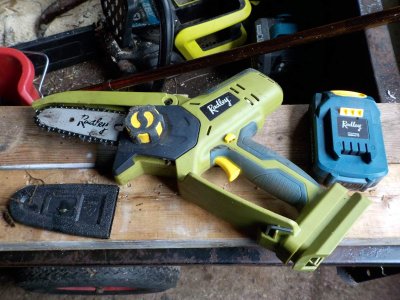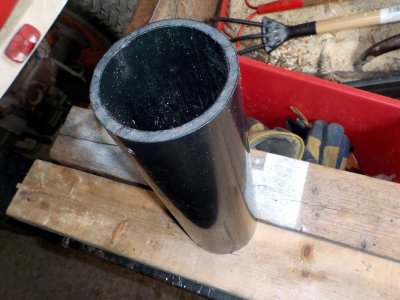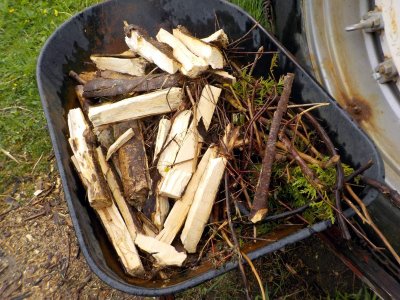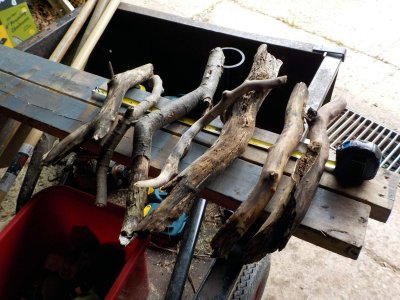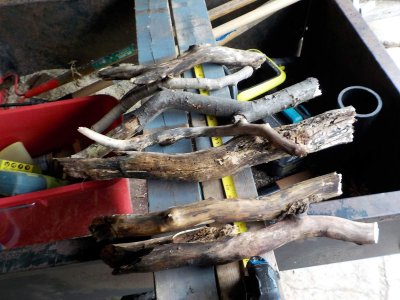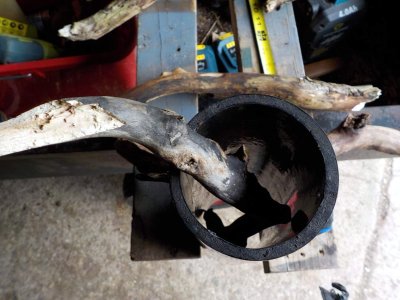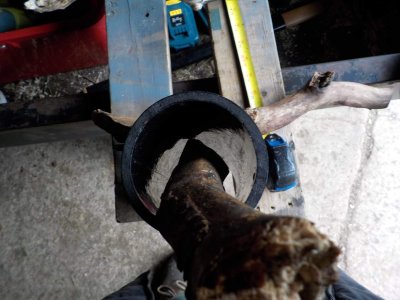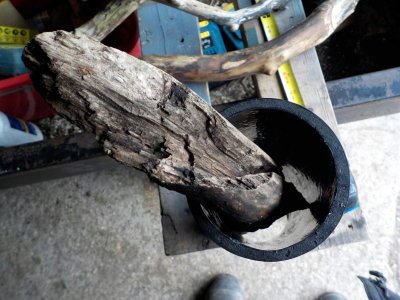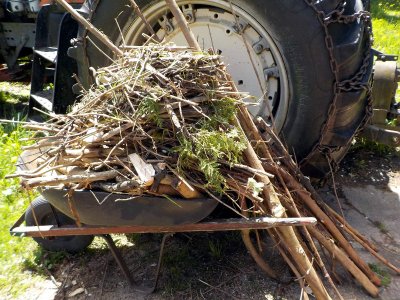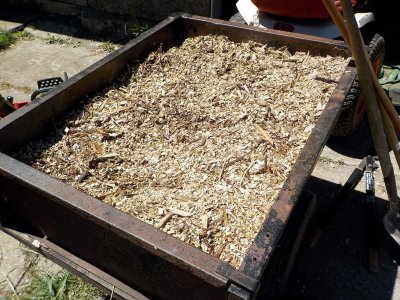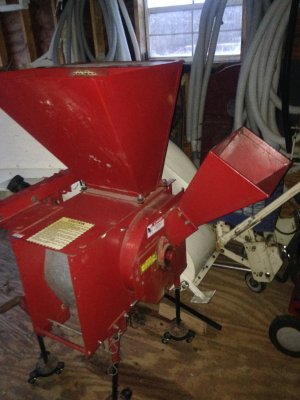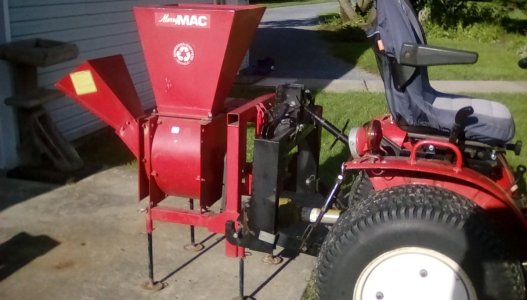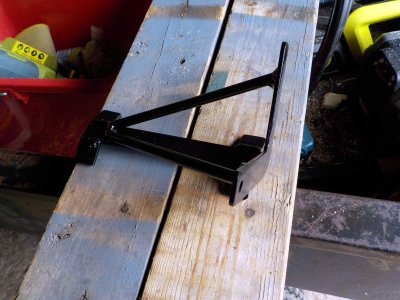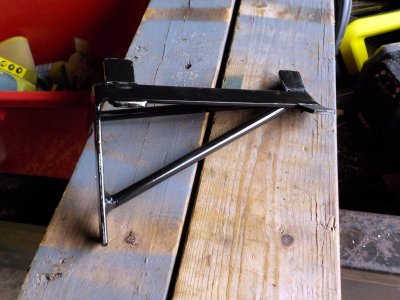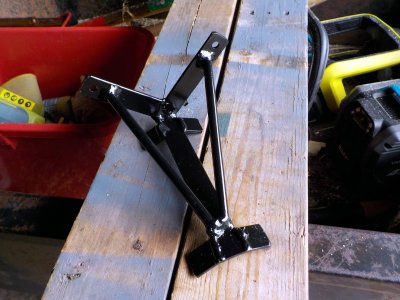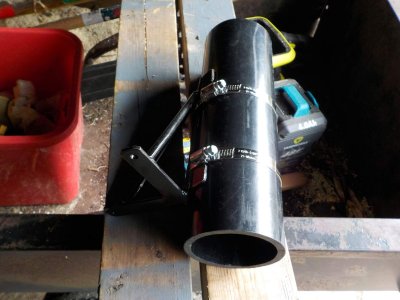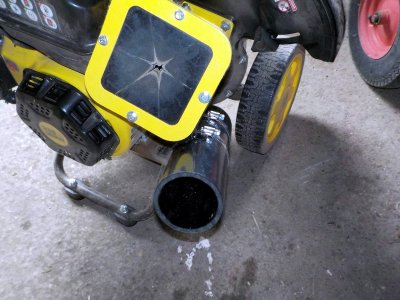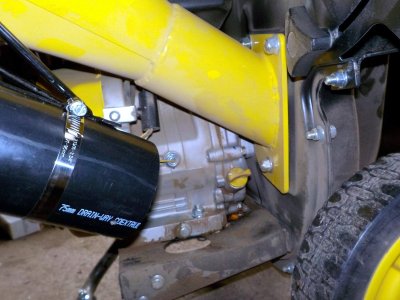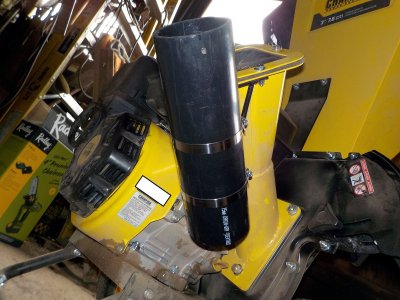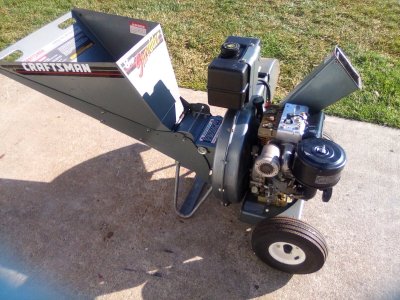A few weeks ago a local store had a 3" Wood Chipper on sale and they had one in stock so I decided to purchase one. Here is what it looks like - fairly typical of a small wood chipper - has a hopper that one can toss in leaves and small branches up to 1/2" diameter and a dedicated front chute to accept branches that is rated for a 3" diameter.
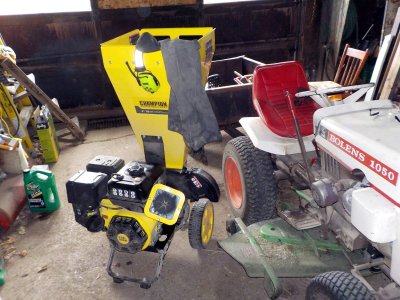
Side view shows the exit chute to deflect the chips and a bag that can be easily attached to contain the discharged material.
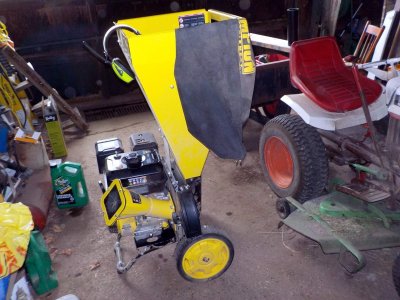
One benefit is the fuel tank sports a fuel gauge - not a great picture but is easy enough to read when using the machine.
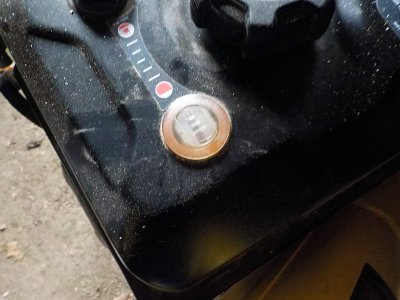
A lot of people buy these machines figuring that it will take up to a 3" diameter branch and end up being disappointed because they find the machine will only accept anything close to a 3" diameter branch if it is straight as a broom handle. If there are any twists, bends, knots, etc. in a branch close to the 3" diameter it usually will not feed into the intake chute and often get stuck or jamb requiring the machine be shut down and the intake chute cleared before you can resume chipping. This often leads to the owner / operator becoming frustrated with their investment and developing a love / hate relationship with their new machine and often parking it in the corner of the shed at the end of the day.
I decided to do a thread on the machine as I knew all this before I purchased the machine having made and used a small 3" homebuilt chipper that mounted on my Bolens 1050 tractor. There were two main reasons why I purchased the unit - first it is powered by its own engine so it is ready to go anytime and I don't have to connect it to a tractor to power it and then tie up the tractor until I am done chipping. The second reason is that the unit has a separate hopper that leaves and small branches can be fed into to chew up to create mulch.
A word of advice - if you plan on chipping anything close to 3" diameter branches by picking them up and feeding them into the intake chute buy a chipper that is larger and rated for 5" or 6" diameter branches. The larger chippers will take 3" branches with bends and knots and chew them up - usually without any problems but you will usually spend twice or three times as much money in your initial investment. However, if you are like me and are "budget restricted" I will offer you a few tips and tricks on how a 3" rated chipper can be your friend and help you turn those small branches into wood chips without getting frustrated in the process.

Side view shows the exit chute to deflect the chips and a bag that can be easily attached to contain the discharged material.

One benefit is the fuel tank sports a fuel gauge - not a great picture but is easy enough to read when using the machine.

A lot of people buy these machines figuring that it will take up to a 3" diameter branch and end up being disappointed because they find the machine will only accept anything close to a 3" diameter branch if it is straight as a broom handle. If there are any twists, bends, knots, etc. in a branch close to the 3" diameter it usually will not feed into the intake chute and often get stuck or jamb requiring the machine be shut down and the intake chute cleared before you can resume chipping. This often leads to the owner / operator becoming frustrated with their investment and developing a love / hate relationship with their new machine and often parking it in the corner of the shed at the end of the day.
I decided to do a thread on the machine as I knew all this before I purchased the machine having made and used a small 3" homebuilt chipper that mounted on my Bolens 1050 tractor. There were two main reasons why I purchased the unit - first it is powered by its own engine so it is ready to go anytime and I don't have to connect it to a tractor to power it and then tie up the tractor until I am done chipping. The second reason is that the unit has a separate hopper that leaves and small branches can be fed into to chew up to create mulch.
A word of advice - if you plan on chipping anything close to 3" diameter branches by picking them up and feeding them into the intake chute buy a chipper that is larger and rated for 5" or 6" diameter branches. The larger chippers will take 3" branches with bends and knots and chew them up - usually without any problems but you will usually spend twice or three times as much money in your initial investment. However, if you are like me and are "budget restricted" I will offer you a few tips and tricks on how a 3" rated chipper can be your friend and help you turn those small branches into wood chips without getting frustrated in the process.
Last edited:

